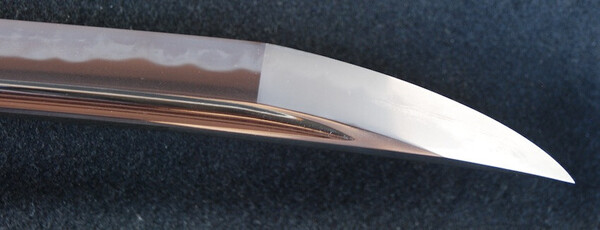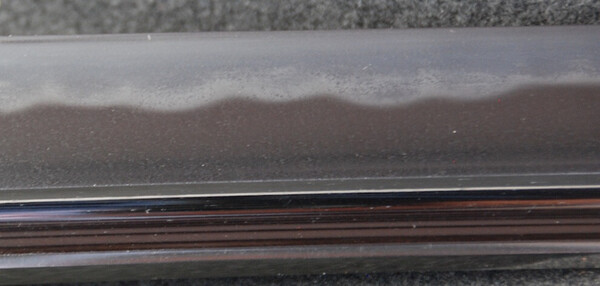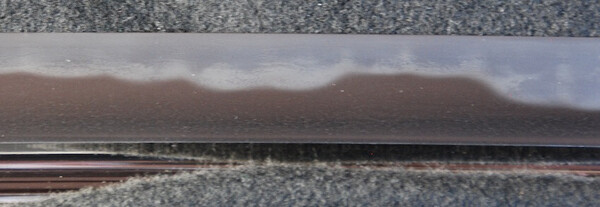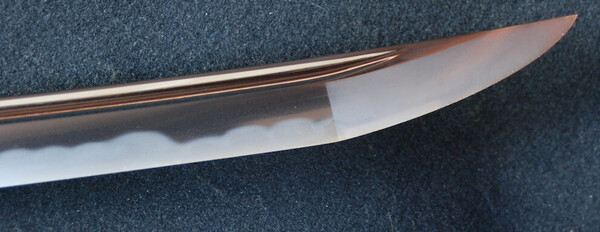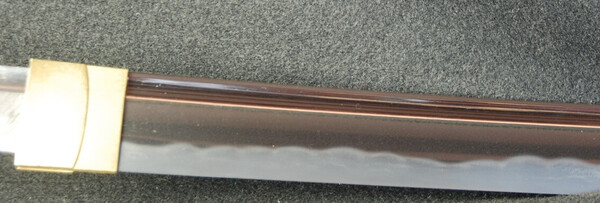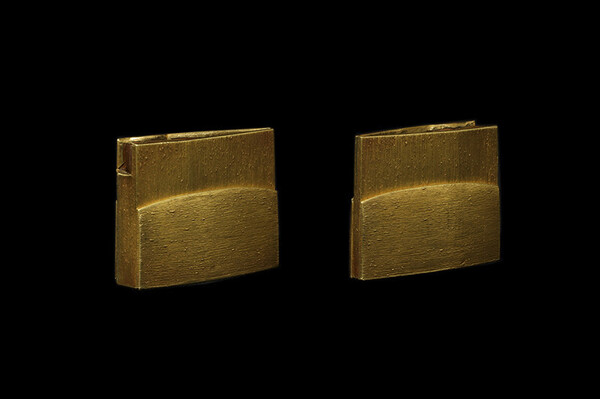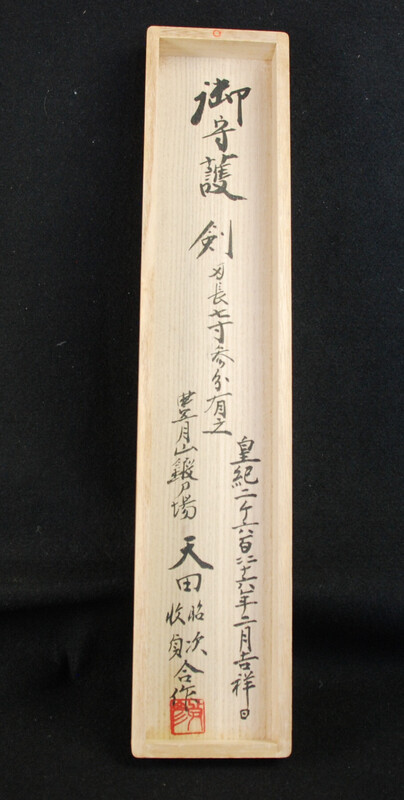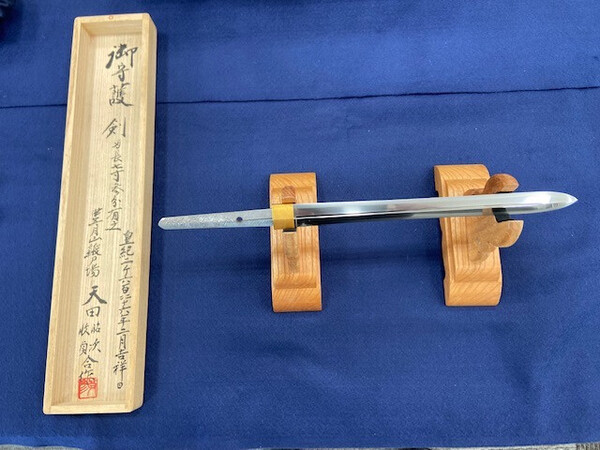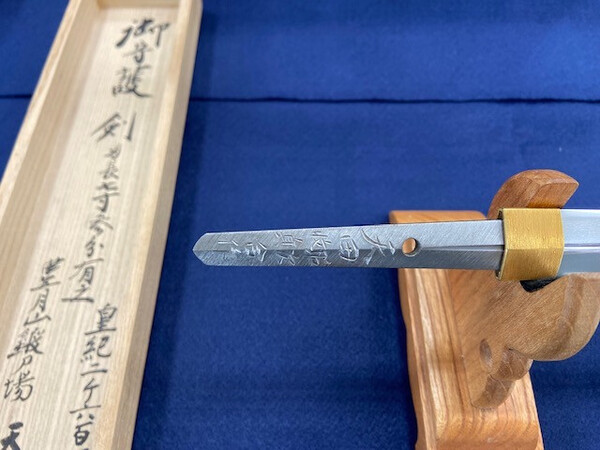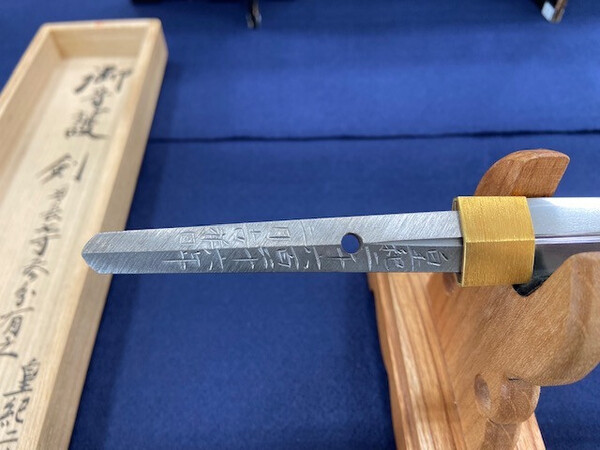
Keichodo
Members-
Posts
185 -
Joined
-
Last visited
-
Days Won
8
Content Type
Profiles
Forums
Events
Store
Downloads
Gallery
Everything posted by Keichodo
-
Visitors to Japan for the Dai Token Ichi who will be around the week following the DTI, should consider a trip to Nagoya to Token World to see the exhibition that opens on November 1st (running until next year January 18th) featuring Kiyomaro, Naotane, and Masahide! This museum is closed on Mondays. Hope to see you in Japan! Robert Hughes
-
With a heavy heart from a recent phone call from Minako Schiller, I wish to report that Guido has taken his leave from this plane of existence! Guido was an early and a long time member of NMB! From his posts, you will recall he was not shy and well... he called a Panzer ... a Panzer! As a career diplomat, he served the German Embassy as an Attache in several Asian countries. He greatly enjoyed his two postings at the embassy in Tokyo. This was certainly his sweet spot because he was very much at home in Japan. In all our years of associating in Japan, I cannot recall a time when we didn't imbibe when meeting. any occasion was an opportunity or an excuse for a Kampai! We had no illusions of grandeur... it was either beer or nihonshu... or beer then nihonshu. We traveled a lot together domestically but only once internationally when we ventured over to Macao! Suspicious minds out there... I know what you are thinking! No, it was not to gamble! We had been invited to attend the gala events for the opening of the History of Steel in Asia Exhibition at the newly opened Macao Art Museum (MAM). Guido, Roger Robertshaw, and I were honored guests for we contributed the entire display of Japanese swords, tsuba, and armor for the three month exhibition. All our items from Japan were shipped through the Embassy diplomatic channel. Edged weapons from seven Asian countries were on display as the Chinese government made their pitch to demonstrate the historical importance of their homeland in the development of edged weapons. Guido was an avid collector! When he was stationed in New York at the United Nations, he collected some fine Civil War firearms including a nice Sharps rifle, a Henry rifle, and several cap and ball revolvers. While in Jakarta, he put together a collection of Kris blades, and in Japan he was in Nihonto heaven and he developed a netsuke collection as well. In mid 2021, during Covid, Guido was recalled to Germany to take his final posting for his remaining two years prior to retirement. To this end, the Ambassador of the Federal Republic of Germany, Her Excellency Ina Lepel sent out a limited number of invitations for the farewell dinner for Mr. and Mrs. Schiller held on May 17 at 7 p.m. at her residence. During this solemn period of emergency pandemic privation, on the day in question, my wife and I made our way to the German Embassy to determine if there really was cause for celebration and if the rumors were true. In fact, Her Excellency Ambassador Ina Lepel, had indeed made great arrangements to send Guido and Minako Schiller back to Germany. It had not been determined if this action resulted from an infraction or if it were a benevolent gesture. It was entirely possible that Attache Schiller had been doing good work and this reassignment was, in fact, a reward. Yet, was it a reward to send a man home to sausage and sauerkraut after years of eating Tokyo’s finest sashimi and raw oysters? Is it even possible to willingly give up the range of heavenly sake found in Japan? What hypnotic spell could shots of Apfelkorn or Rumpel Minze Schnapps have over the infinite variety of locally brewed sake? To this day, these questions remain unanswered… unsolved mysteries and unanswered questions to compete with Guido's speculation on the missing Masamune sword. Like a Teutonic knight, loyal to the order, Herr Schiller was indeed packaged up and moved to his ancestral home. Unfortunately, the final stage of Guido's employment was not completed. He suffered a massive stroke and fell into a coma from which he never recovered. He remained in this state until October 10th, 2025. He is now only with us in our memories of his deeds, a man who served his country well as he rose to officer level in the army and then entered diplomatic service. Of greater importance was his service to his family, to his wife Minako and his daughter Hana. Sadly, Guido never got the opportunity to play with his new granddaughter. Guido is greatly missed... by me... his drinking buddy... I mourn this loss!
- 15 replies
-
- 26
-

-

-

-
Greetings sword connoisseurs! If you have time please check out the latest edition (#15) of Super Samurai Market that Paul Kremers and I created especially to herald the Dai Token Ichi which will be held on November 1st and 2nd! We hope to see you in Tokyo! Best Regards, Robert Hughes https://youtu.be/Z64qdjk92LU
-
Greetings Samurai Fine Art Mavens! If you are venturing to Japan for the Dai Token Ichi you may wish to participate in these extra events.... Best Regards, Robert Hughes Cinq study session (Oct. 30th) offered with Seikodo in Ginza! This popular event will be offered on Thursday Oct. 30th from 5:30 p.m. Participation fee including the dinner party is yen 8,000. Arrival time will be from 5:30 p.m. at Cinq (restaurant) for the sword viewing, followed by a discussion of the swords at 6:30. Lastly, the dinner party will follow the sword discussion at around 7:00 ... Attendance by advance reservation only. Contact Robert Hughes at keichodo@yahoo.com in order to participate. Saturday, Nov. 1st Yakatabune Tokyo Bay Cruise..... Arrangements: This event is scheduled for Saturday, November 1st, with a bus pick-up in front of the Tokyo Bijitsu Club from 5:30 p.m. The Yakatabune sails at 6:00 p.m. Participation by advance reservation only. Notification to attend is also a commitment to pay! Cost is yen 13,200 per participant (tax included) all inclusive food and drinks. Contact Robert Hughes at keichodo@yahoo.com in order to participate.
- 1 reply
-
- 3
-

-

-
Greetings sword mavens! In case you cannot make it to the Dai Token Ichi in 2024, there is always next year! At the recent meeting of the National Commercial Sword Dealer's Association, the organization behind the Dai Token Ichi, the dates for 2025 were confirmed. It will be the first weekend in November, so Saturday, November 1st and Sunday, November 2nd! Lots of notice in advance for you to make your plans! Best Regards, Robert Hughes Keichodo
-
Tokyo Dai Token Ichi Additional Events For 2024 This is an invitation for overseas visitors who will visit Japan to attend the Dai Token Ichi 1) Sword Study Session at Cinq on Thursday, October 31st.. (Organized by Seikodo and Keichodo) On Thursday, October 31st, there will be a sword study and dinner party again in Ginza at the Italian Restaurant Cinq (same venue as previous years). Location is quite convenient. Participant fee is yen 5,000 (for the venue) and the dinner party will be sponsored by Mr. Hisashi Saito of Seikodo. Pay participant fee on arrival at the venue. Once again, the date will be Thursday, Oct. 31st! Arrival time will be from 5:30 p.m. for the sword study. Discussion of swords at 6:30 and the dinner party will follow the sword study at around 7:15 ... Attendance by advance reservation only! Contact: Robert Hughes at keichodo@yahoo.com Cinq - Access For the Thursday study session, it is very easy to find the venue "Cinq" from inside the Metro System (subway). You go to Ginza Station (on the Ginza line), then go up one level from the platform to the underground concourse and find the B-6 exit. The restaurant/club is called Cinq and it is half way up the exit stairwell. So, you don't even have to exit onto street level, it is right inside the metro underground network. It is very convenient....no long walk or need for a taxi. The actual street address for Cinq is Ginza 5-4-3 Taikakukan B1 which is the building with the B6 subway entrance, so go down the first flight of subway entrance stairs and you will find Cinq at the first stair landing. Cinq address: 東京都中央区銀座 5-4-3 対鶴館 B1 〒104-0061 Taikakukan B1, 5-4-3 Ginza, Chuo-ku, Tokyo 2) Saturday, Nov. 2nd Yakatabune Tokyo Bay Cruise Dinner Party with plenty to eat and all you can drink..... (organized by Keichodo) Arrangements: This event is being planned for Saturday, November 2nd! As in the past, participants can leave from in front of Dai Token Ichi (Tokyo Bijitsu Club) at 6:30 p.m. Cruise to start from 7:00 p.m. Participation by advance reservation only. Contact: Robert Hughes at keichodo@yahoo.com... Your reservation must be confirmed by October 31st. Notification to attend is also a commitment to pay if event is held (weather permitting)... Cost is yen 12,000 per participant (tax included) to be paid by noon on November 2nd at the Keichodo stall at the DTI. If you plan on going directly to the venue to board the mighty vessel without riding the bus, please notify in advance as a head count is conducted prior to the bus departure. Again, participation will be by advance reservation only. Reservations need to be finalized/confirmed 48 hours prior to the event. No cancellations after reservation commitment please… Notification to attend is also a commitment to pay. Cost yen 12,000 per participant (including sales tax) to be paid by 12:00 noon at the DTI.
- 1 reply
-
- 9
-

-

-

-
Greetings everyone! Here is the latest promotional video Paul Kremers and I created for Touken Matsumoto in Nishi-Kasai Tokyo! Stay well! Robert Hughes Super Samurai Market Episode No. 11 for Token Matsumoto May 2024 Overview: https://www.youtube..../watch?v=IergGDqHlDQ Item #1 https://www.youtube..../watch?v=7ekP_Yp5rD4 Katana (KA-0623) Motomitsu from Osafune, Bizen Province Back: In March [illegible] (Nambokucho to Oei Period). Juyo Token in shirasaya ¥7,000,000 Web details https://www.touken-m...duct/shousai/KA-0623 Item #2 https://www.youtube..../watch?v=ofj95j-1IJw Katana (KA-0615) Kawachi Daijo Fujiwara Kunisada Early Edo Period. Tokubetsu Hozon Token in shirasaya/with koshirae ¥850,000 Web details https://www.touken-m...duct/shousai/KA-0615 Item #3 https://www.youtube..../watch?v=0aLROOSu3LU Kozuka (KOZ-2795) Design: Westerner [Spaniard/Portuguese] and European dog in the Muromachi Period Mumei: attributed to the Goto Tradition during the Momoyama Period Hozon Tosogu ¥200,000 Web details https://www.touken-m...uct/shousai/KOZ-2795 Item #4 https://www.youtube..../watch?v=DwZ6j5DAB3c Fuchi-kashira (FU-1979) Design: The Tale of Genji Mei: Shokatei Motohiro(with Kao)Hozon Tosogu ¥200,000 Web details: https://www.touken-m...duct/shousai/FU-1979
-
- 8
-

-

-
Super Samurai Market - Episode 9: Japanese swords and fittings at Token Matsumoto Part 8 https://www.youtube..../watch?v=AftMf0EoilY This Episode of Super Samurai Market again takes us to Token Matsumoto a sword dealer in Nishi Kasai just 30 minutes from Tokyo station. If you are interested in purchasing any of the presented items please find them here: https://www.touken-matsumoto.jp/en The individual item video presentations are linked below. Four items from the shop are presented. 1. Katana by Hizen Tadahiro yen 1,500,000 https://www.touken-matsumoto.jp/en/pr... VIDEO LINK: • Super Samurai Market - Episode 9 - It... 2. Tanto by Kanesaki yen 650,000 https://www.touken-matsumoto.jp/en/pr... VIDEO LINK: • Super Samurai Market - Episode 9 - It... 3. Tsuba by Tojusai Masakatsu yen 500,000 https://www.touken-matsumoto.jp/en/pr... VIDEO LINK: • Super Samurai Market - Episode 9 - It... 4. Kozuka, Ko-Mino yen 500,000 https://www.touken-matsumoto.jp/en/pr... VIDEO LINK: • Super Samurai Market - Episode 9 - It...
- 1 reply
-
- 7
-

-
2024 NBTHK SHINSA SCHEDULE AND SUBMISSION ISSUES *In addition to shinsa registration now being the month prior to shinsa submission, there are also quota limits for the number of items accepted. Registration should be done early in the shinsa registration period as the quota can be reached within a few days. Anyone considering sending swords to Japan for shinsa needs to be aware of the time constraints. Swords shipped to Japan must arrive prior to the end of the month in order for a licensing appointment the following month. Once licensed, the sword is eligible for shinsa registration after the month of licensing (if shinsa is offered). Shinsa submission follows in the month after shinsa registration. This means just getting a sword into Japan and submitted for licensing and shinsa is a minimum four month process or longer depending on when the shinsa is offered. 2024 April Tokubetsu Juyo Shinsa Submission dates 4/1-4/3 on-line registration 3/1-3/25 May Kodogu Hozon/Tokubetsu H. Submission dates 5/7-5/9 on-line registration 4/1-4/25 June Swords Hozon/Tokubetsu H. Submission dates 6/3-6/5 on-line registration 5/1-5/25 Aug. Kodogu Hozon/Tokubetsu H. Submission dates 8/5-8/7 on-line registration 7/1-7/25 Sept. Swords Hozon/Tokubetsu H. Submission dates 9/2-9/4 on-line registration 8/1-8/25 Oct. Juyo Shinsa Swords/Tosogu Submission dates 10/1-10/3 on-line registration 9/1-9/25 Nov. Kodogu Hozon/Tokubetsu H. Submission dates 11/5-11/7 on-line registration 10/1-10/25 Dec. Swords Hozon/Tokubetsu H. Submission dates 12/2-12/4 on-line registration 11/1-11/25 2025 Feb. Kodogu Hozon/Tokubetsu H. Submission dates 2/3-2/5 on-line registration 1/1-1/25 March Swords Hozon/Tokubetsu H. Submission dates 3/3-3/5 on-line registration 2/1-2/25 Best Regards, Robert Hughes
-
The shop using the label "Orthosis" for "Kodogu" is Ms. Miura's shop in Saitama. The connection is most likely, as speculated above, in the concept of "supporting accoutrements" for swords... I will tease her the next time I see her at a sword auction. I will ask her how her "orthosis" sales are going....
-
Katana signed: Bushu Edo Ju Nagakuni saku kore with a cutting test (setsudan mei) Kanbun 6 nen 3 gatsu roku nichi Yamano Kanjuro Hisahide (Kao) Futatsu dou kiriotoshi. Translated as on March 6th in the sixth year of Kanbun (1666), Yamano Kanjuro Hisahide cut through two bodies. Period : Early Edo~Mid. Edo Country : Musashi Length: 63.3 cm. Paper : NBTHK Tokubetsu Hozon Token Paper Fittings : Blade in shirasaya accompanied with period koshirae Price: yen 2,800,000 Correspond at: keichodo@yahoo.com 時代 : 江戸初期~中期 国 : 武蔵国 証書 : 財団法人日本美術刀剣保存協会 特別保存刀剣 鑑定書 外装 : 拵付白鞘入 刃長 : 2尺 9 分 63.3 cm 目釘穴 : 1個 NAGAKUNI (永国), 1st gen., Kanbun (寛文, 1661-1673), Musashi/Higo Signature Variations -Heianjō-jū Nagakuni” (平安城住永国), -Kawachi no Kami Gensei Nagakuni sanjūroku-sai saku” (河内守源姓永国三十六歳作, (made by Kawachi no Kami Nagakuni from the Minamoto clan at the age of 36”), -Kawachi no Kami Minamoto Nagakuni” (河内守源永国), Edo- Hōjōji school, probably a student of Yoshitsugu (吉次) or of Kunimasa (国正), the mentioned age of 36 is found on a blade dated Kanbun eight (1668), that means his year of birth calculates as Kan ́ei ten (寛永, 1633). It is said that he moved later to Kumamoto (熊本藩) but he also worked in Echizen province. NAGAKUNI (永国), 2nd gen., Genroku (元禄, 1688-1704), Musashi/Dewa -Hōjōji Tachibana Nagakuni” (法城寺橘永国) -Bushū Edo-jū Nagakuni saku” (武州江戸住永国作), -real name Umeyama Kanbei (梅山勘兵衛), he is also listed with the first name Kan ́emon (勘右衛門), student of the 1st generation Hōjōji Kunimasa (国正), he moved later to Akita (秋田). There has been some confusion regarding theses signatures. Until fairly recently, it was believed that the signatures Kawachi Kami Minamoto Nagakuni and Bushu Edo Ju Nagakuni referenced separate individuals (father/son) but a sword has surfaced that combines elements of these two signatures 「河内守源永国武州於江戸作之」Kawachi Kami Minamoto Nagakuni Bushu shu Edo saku kore, indicating that some signature variations believed to have been for the second generation were, in fact, referencing the first generation. There are also some stories connecting Miyamoto Musashi to Nagakuni when he spent time in Kumamoto. Source of direct quotation explanation below related to: Yamano Kanjuro Hisahide Sesko, Markus (2014) Tameshigiri: The History And Development of Japanese Sword Testing, Markus Sesko Print and Publishing: Lulu Enterprises, Inc. ISBN 978-1-312-32703-0 Please purchase a copy of Mr. Sesko’s book as it is an amazing source of detail pertaining to the topic of sword testing. 2.3.3 The Nakagawa Saheita link “A very important figure in the transmission of the early systematic tameshigiri to the later bakufu-employed sword testers was Nakagawa Saheita Shigeyoshi (中川左平太 重良, ?-1653). He was a direct student of Tani Moritomo who passed on the techniques learnt from him to Yamano Ka ́emon Nagahisa (山野加右衛門永久) and his son Kanjūrō Hisahide (勘十郎久英), who are described in detail later. Nagahisa ́s son was namely one of the first persons to be employed by the bakufu as a specialized sword tester. As already mentioned, Nagahisa’s successor and 2nd generation of the Yamano line of sword testers was his son Kanjūrō Hisahide (勘十郎久英). There is also the theory that Hisahide was the older brother of Nagahisa, but from the age difference of almost 40 years, this approach can rather be ruled out, although it allows the speculation that Hisahide was Nagahisa ́s adoptive son. Anyway, we don ́t know for sure when Hisahide was born and when he died. There is a blade extant (see picture 13) which states in the tameshi-mei carried out in Kanbun three (1663) that he was 29 years old at that time, which calculates his year of birth as Kan ́ei twelve (1635). But there exists also a tameshi-mei (see picture 12) which is dated Kanbun five (1665) and states that he was 35 years old at that time which calculates Kan ́ei eight (1631) as Hisahide ́s year of birth. Hisahide took over the former first name Kanjūrō of his father, and used first the name Yasuhisa (休久), followed by Narihisa (成久), before eventually arriving using the name Hisahide. When we also include the third Yamano-generation Hisatoyo (久豊), we learn that it was the character “Hisa” (久) which was handed down within the family. However, there is a single tameshi-mei by Hisahide extant where he used the character of “Naga” (永) from his father to create the name “Naganari” (永成). That means he used altogether four different names. What we don ́t know exactly is from when to when he used all these names. The today commonly accepted theory on that matter goes back to Dr. Satō Kanzan (佐藤寒山) and is as follows: “The oldest extant setsudan-mei is from the second year of Meireki (1656) and mentions the name Yasuhisa. Then follows a short period of time, somewhere around the early Manji era (1658~1659), when he used the name Naganari. And from the third year of Manji (1660) to the first year of Kanbun (1661) he used the name Narihisa. ... And the final name change to Hisahide took place between the eighth and twelfth month of Kanbun one (1661).” The earliest extant tameshi-mei with the name Hisahide, by the way, is dated the eleventh month of Kanbun one. On the other hand, Ogasawara Nobuo (小笠原信夫) states in his Nihontō no rekishi to kanshō (日本刀の歴史と鑑賞) that the chronological order of name changes was Yasuhisa, Naganari, Narihisa, and Hisahide, i.e. he places the name Naganari between Yasuhisa and Narihisa. The following page shows a tameshi-mei with the two early names Yasuhisa and Narihisa, and the next page one with the early name Naganari. The aforementioned explicit employment of Hisahide ́s by the bakufu as sword tester can be dated to the second year of Jōkyō (貞享, 1685). In the Kaden-shiryō (家伝史料), a successively updated collection of biographies starting with the Edo period, we find for Jōkyō two the information that Yamano Kanjūrō and Yamano Kichizaemon (山野吉左衛門), the third Yamano-generation Hisatoyo, became from then on o-tameshi goyō with a stipend for the support of ten persons. Hisahide was already 51 years old at that time, accepting Kan ́ei twelve (1635) as his year of birth and following the then Japanese way of counting the age of a person. Jōkyō two can be confirmed by the chronicle Tokugawa-jikki (徳川実記), which also lists Yamano Kanjūrō for that year, to be precise for the third month of that year, and says further that he was carrying out his duties at the Asakusa (浅草) execution place. We read further that, only one month later, the bakufu provided him with a property in Edo ́s Aoyama district (青山), present-day Minato Ward, measuring 2,500 tsubo (~ 8,200 m2). Well, at the time of Nagahisa, the Yamano family had lived in the vicinity of the mentioned Eikyū-ji and thus in the close vicinity of both the Asakusa and Kozukahara execution grounds. And Hisahide moved once more, namely from Aoyama to the Ichigaya district (市ケ谷) which was on the other side of Edo Castle and was thus somewhat separated from all these execution grounds. There was even the rumour that Hisahide had bodies of executed felons delivered to this new house for him and his students to practice there, and that they were “stored“ under the veranda when it was raining but this seems too far-fetched and sounds more like an Edo-period urban legend. On the other hand, tameshigiri on corpses on one ́s own property was only prohibited later. But there exists more such episodes related to Hisahide. One says that sometimes he made a hinin lay under a corpse. He then completely split in two the body but did not even scratch the poor assistant. Another one says that one day he was walking behind a man carrying a water melon on his shoulders up a hill. This was so “inviting” for him that he caught up, drew his sword, and when the two cleanly split halves of the melon fell on the ground, he said: “Here goes the head!” The man was, according to this legend, so perplexed that he ran after the two melon halves bouncing down the hill because he really thought it was his own head. But back to our topic. We don ́t know for sure when Hisahide died, as there are neither records nor a gravestone extant which could provide this information. The Ochibo-shū (落穂集) says he died during the Jōkyō era (貞享, 1684-1688),*23 but there is also the theory that he died in Genroku seven (元禄, 1694) as the Eikyū-ji ́s register of death lists for the tenth day of the seventh month of that year a person with the name Yamano Kanjūrō Yorikura (山野勘十郎頼蔵). But several things speak against the conclusion that this entry refers to Hisahide. One is that there are no known tameshi-mei by him from the Genroku era. They become lesser in number already from the Enpō era (延宝, 1673-1681) onwards and the latest is from Jōkyō four (1687). Well, this does not necessarily mean that he died shortly later. It is also possible that he had to retire around Jōkyō four or five for health reasons or that the new bakufu employment involved other, more administrative tasks. Another thing that speaks against Yorikura (this first name also reads as Raizō) referring to Hisahide is that even the tameshi-mei from Jōkyō four is signed with the name Hisahide and that it was as mentioned the character for “Hisa” that was inherited within the Yamano succession. In other words, it is rather unlikely that Hisahide had changed his name towards the end of his life to Yorikura. On the other hand, such registers of death usually don ́t record any formal first name (nanori, 名乗 or jitsumei, 実名) but state only the family name (myōji, 苗字) and common first name (zokumyō, 俗名). Also, the two characters “Yorikura” are separated a little from the name “Yamano Kanjūrō,” and so there is also the theory that Yorikura does not refer to the name of the person who died that day but to the person who was organizing the funeral service and taking care of the grave.”
-
- 5
-

-
Magnificent Katana by "Mukansa" Yoshiwara Kuniie
Keichodo replied to Keichodo's topic in Sold Archive
Item has sold! -
I was also puzzled by this term... orthosis... i had to look it up to see if there was any applicable nuance. I believe this is evidence of Deep-L translation failure. I will ask Mr. Hanada (event organizer) how the translation was handled to resolve the mystery. Anyway, I noticed it when I received a package of 100 copies of the flyer to disseminate... I have become an agent of orthosis... perhaps a new sinister organization to dominate the international sword market... Orthosis: Oxford Dictionary an external device or apparatus, such as a brace or splint, used in orthopaedics to support or immobilize the spline or limbs.... Seems to imply the use of a sword for a splint....
-
Greetings in 2024! Super Samurai Market #8 Promoting sales for Touken Matsumoto #7 https://www.youtube..../watch?v=JTLt1y_rqZc This 2024 new year Episode (#8) of Super Samurai Market is part 7 for Token Matsumoto. Four items from the shop are presented. If you are interested in purchasing any of the presented items please find them on the Touken Matsumoto website: https://www.touken-matsumoto.jp/en The individual items are also linked below. 1. Katana by Omi no Kami Sukenao https://www.touken-matsumoto.jp/en/pr... (now reserved) 2. Wakizashi by Bizen no Suke Fujiwara Munetsugu https://www.touken-m...duct/shousai/WA-0648 (yen 1,200,000) 3. Tsuba by Sendai Kiyosada https://www.touken-matsumoto.jp/en/pr... (yen 200,000) 4. Tsuba by Yasunori https://www.touken-matsumoto.jp/en/pr... (yen 200,000) Best Regards, Robert
-
- 2
-

-

-
Katana Za 2024 in Osaka on March 29th (Friday) and 30th (Saturday)! Last November brought around a great Dai Token Ichi and the NBTHK National Convention! There was much sword activity and socializing before and after the DTI! If you couldn't make it over don't despair as something big is coming up soon! The newly organized Katana Za Sale and Exhibition will be held for the second time giving the Kansai Region a sword event hoping to rival the Dai Token Ichi. The 2024 Katana Za event will be held on March 29th Friday and March 30th Saturday. This springtime event will be in the Osaka Jo Hall space inside the Shiromi Hall space from 10:00 a.m. to 5:00 p.m. With fortuitous timing, the event should coincide during the peak of cherry blossoms.... Think about it! Spring time in Osaka swilling sake under the cherry blossoms... So come to Osaka!
-
Greetings in 2024 sword friends, Time to feed your dragons! The dates established by the Zen Tosho Kumiai (National Commercial Sword Traders Association) for the Dai Token Ichi in 2024 will be Saturday November 2nd and Sunday, November 3rd. These dates are a few weeks earlier than the past year. As a member of the association, I hope you find these dates convenient and that you can begin making your travel arrangements if you wish to attend this amazing annual exhibition/sale. In a follow up message later, I will provide details of the extra events that I will arrange around this time. Best Regards, Robert Hughes Keichodo
-
Katana by "Mukansa" Yoshiwara Kuniie Blade is signed and dated: (表)吉原荘二恒家作之 Yoshiwara Soji Tsuneie kore o tsukuru (裏)昭和辛亥歳正月(Showa kanoto-ii shogatsu) New Year’s 1971 Blade Description Hacho (Edge length) 71.2 cm. Sori (Curvature) 2 cm. Moto-haba (depth at ha-machi) 3.4 cm. Saki-haba (depth at kissaki) 3.05 cm. Motokasane (thickness) 0.72 cm. Katana: Shinogi-zukuri, iorimune, mihaba futoku The temper pattern (hamon) is gunome midare, rich in ji-nie and kinsuji while the hada is koitame. The boshi in the large kissaki is midarekomi. This robust blade is a visually exciting sword to study. Weight: blade only 844 gram. Engraving: "Bo-hi" kaki-nagashi on both sides Gold foil double Habaki / Shirasaya Authentic Japanese Sword Certificate Price 1,400,000 JPY Sword smith YOSHIHARA Kuniie (YOSHIHARA Sôji) was born in February of Shôwa 20 (1945). His grandfather was YOSHIHARA Kuniie and his father was YOSHIHARA Masahiro. Alongside his brother (Yoshindo), Sôji learned sword forging under his grandfather Kuniie. This sword is one of Yoshiwara Kuniie’s excellent works emulating a blade by the legendary Kiyomaro. With a well-structured hamon, vivid jigane, and o-kissaki it is a masterpiece. The blade is in very good full polish and great condition overall. Exhibiting many attractive features such as: a gunome midare hamon with ashi, a rich hada in ko-itame, and lots of ji-nie and kinsuji. Sword smith Yoshihara Kuniie (Shoji) was recognized as Mukansa level at 37 years of age in Shôwa 57 (1982) and prior to that he received many awards. In 2008, he was designated an Important Living Cultural Property of Tokyo. Some of his other achievements were: -1966 youngest ever recipient of the Award for Effort -1971 youngest ever recipient of the Mainichi Newspaper Award -2003 appeared in the movie The Last Samurai in the role of a sword smith. Without any doubt, Shoji Yoshihara is considered one of the top contemporary sword smiths in Japan. He was a likely candidate to become a Living National Treasure (Ningen Kokuho) sword smith, but sadly he passed away in 2023. I had the great pleasure of knowing him quite well as we practiced Tenshinsho Jigenryu Kenjitsu together for many years after I joined the dojo in 1986 where he practiced and taught as a senior student.
- 12 replies
-
- 13
-

-

-
Important Contemporary Ken: jointly signed (Gassaku) by brothers Amada Akitsugu (Seichi) and Amada Kanesada (Sadao) -Amada Akitsugu was designated a Living National Treasure in 1997 Nagasa: 23.4 cm. Sori: no curvature Motohaba: 2.07 cm. Motokasane: 0.67 Mekugi ana : one Shape: ryo (both sides) high shinogi zukuri. Kitae: Ko-itame hada with slight nagare hada. Overall very fine, tight, and beautiful jitetsu. Very fine ji nie. Jigane is very fine and dense. Nie expressed as ji nie mijin ni atsuku tsuku. Jitetsu is an excellent grade. Hamon: very tight suguha with yo along the edge and small ashi, deep nioi Boshi: suguha cho yaki-tsumeru Nakago: ubu, narrow ken gata, with Yasuri suji chigai (filed from the left side) Habaki: copper with gold foil Price: yen 2,000,000 Shirasaya and presentation box Comment: Ningen Kokuho, Amada Seichi (Akitsugu), and his younger brother, Amada Sadao (Kanesada), jointly produced this ken to commemorate the national treasure blade by Awataguchi Toshiro Yoshimitsu. Within the box, is calligraphy by the Amada brothers. In total, this is a masterpiece omamori ken. Amada Akitsugu was born in Showa 2 (1927) in Honda village, in Kita-Kanbara, Niigata Prefecture which is now part of Shibata City. When he was nine years old, his father Amada Sadakichi died. In Showa 15 (1940), Akitsugu moved to Tokyo to join the Nihon Tanren Denshusho. He was an apprentice under Kurihara Hikosaburo (Akihide). At the time, one of his senior students was Miyairi Akihira (Yukihira). From around Showa 30 (1955), Akitsugu’s talents began to shine. During Shinsakuto exhibitions he received awards every year. However, when he became thirty he suffered from sickness and it took him eight years to recover. In Tsukioka, near an onsen area, he set up his home and forge which he named Hougetsusan Tantojo. He suffered hardships in life but persevered through all his difficulties. With his work, he showed exceptional progress and he was recognized as Mukansa in Showa 47 (1972). Then in Showa 52 (1977), Showa 60 (1985), and Heisei 8 (1996) he received the Masamune Sho award. For each of these awards, he submitted different school works: Yamashiro Den, Soshu Den, and Bizen Den. He is the only sword smith to ever receive this award for swords representing three different traditions. In Heisei 9 (1997) he was recognized as Ningen Kokuho, a living national treasure. He died in Heisei 25 (2013) at 85 years of age. Akitsugu’s younger brother, Kanesada’s real name was Amada Sadao, born in Showa 8 (1933). He was six years younger than Akitsugu. The brothers worked together at Hougetsusan Tantojo. He greatly assisted his older brother. After his brother’s death, Kanesada opened a memorial hall and gave lectures to visitors. Akitsugu’s great success is in part due to the role of his younger brother, Kanesada. This ken was made in Heisei 3 (1991), when Akitsugu was 64 years old and Kanesada was 58 years old. With the joint signature for a commemorative piece, it is a rare work. The ken shape first appeared in the Heian period but was not commonly carried by samurai. Buddhist monks carried ken as talisman for spiritual protection. This particular ken, as a commemorative blade, is a perfect reproduction of the national treasure blade by Awataguchi Toshiro Yoshimitsu which implies Akitsugu reached a level high level with his skill. This is an important life accomplishment and was only possible through Akitsugu’s individual research in creating appropriate tamahagane. He acquired the raw materials (sand/iron) from Oku-Izumo in Shimane Prefecture and mastered the correct temperature. After World War II, the Amada brothers made a great effort in forging swords and research. They supported each other through their hardships. This piece recognizes the important relationship between these two brothers. The box calligraphy (hakogaki) establishes the cooperation between these two champions of contemporary sword smithing. This is an important modern era sword. In 1983, with well-known Niigata Prefecture sword polisher Hashimoto Masanao, I visited Amada-san at his home forge. I was living in Niigata at the time and Hashimoto Masanao and his brother Hashimoto Kenyo were my instructors of Musoshinden Ryu Iaido. Due to this important connection, I was invited to accompany them on a visit to meet Amada-san and spend the day at his forge. After sharing tea, Amada-san got up to head to the lavatory to relieve himself. He ran his hand down the front of his loose fitting slacks and realized his zipper was on the backside. He had inadvertently put his trousers on backward. This gave a moment of great levity and all of us howled in laughter. Without doubt, Amada-san’s preoccupation with his tasks took priority over less trivial matters such as appearance and fashion… He was a charming individual and though slight of build, he was capable of forging the most amazing swords.
-
Super Samurai Market - Episode 7: Japanese Swords and Fittings at Token Matsumoto part 6 https://www.youtube..../watch?v=_-FW4HscLJU This December Episode of Super Samurai Market takes us again to the Token Matsumoto sword shop in Nishi Kasai a mere 30 minutes from Tokyo station. If you are interested in purchasing any of the presented items please find them here: https://www.touken-matsumoto.jp/en The individual items featured in the You Tube presentation are also linked below. Four items from the shop are presented: Wishing all sword aficionados on NMB Season's Greetings and a Happy New Year! All the best for 2024! Robert Hughes 1. Wakizashi by Inoue Shinkai with Tokubetsu Hozon Certification yen 4,500,000 https://www.touken-matsumoto.jp/en/pr... 2. Wakizashi by Bishu Osafune Nariie dated Joji 2 nen (1363) with Tokubetsu Hozon Certification yen 850,000 https://www.touken-matsumoto.jp/en/pr... 3. Kozuka attributed to Goto Teijo by Mitsuaki with Hozon Certification Cherry blossoms beside a Shinto gate yen 300,000 https://www.touken-matsumoto.jp/en/pr... 4. Tsuba by Toshikage (Tanaka Toryusai tradition) Setsugetsuka seasonal beauty with Hozon Certification yen 400,000 https://www.touken-matsumoto.jp/en/pr...
-
- 1
-

-
Greetings samurai art aficionados! A new Episode of Super Samurai Market (#4 for Touken Matsumoto) is available (November version) to help promote our friend Mr. Matsumoto's sword business from his fairly new shop in Nishi-Kasai! This time four items from Touken Matsumoto are presented: 1. Wakizashi by Tanba no Kami Fujiwara Terukado yen 450,000 2. Katana by Osafune Tadamitsu yen 700,000 3. Fuchi Kashira by Yokoya Soyo yen 250,000 4. Tsuba Daisho attributed to Sendai yen 350,000 Check it out!! You can find all links to the products in the video description. Feel fee to contact his shop directly to initiate a purchase or get in touch with either Paul or myself! https://youtu.be/rm4hKIpIkNk
-
Greetings Samurai Art Connoisseurs! I would like to share with you the latest Super Samurai Market production by Paul Kremers and myself which is the fourth one so far, and the third one promoting Touken Matsumoto in Nishi-Kasai, Tokyo. This SSM version introduces two lovely katana and three significant fittings. Any inquiries can be directed to me, Paul Kremers, or directly to Mr. Matsumoto. This SSM presentation includes 5 items from Token Matsumoto: Swords 1. Katana by Mutsu no Kami Fujiwara Toshinaga 2. Katana by Kawachi no Kami Fujiwara Masahiro Fittings 1. Kozuka by Goto Mitsuyoshi 2. Tsuba by Hayashi Shigemitsu 3. Kozuka by Hamano Shozui If you are interested in purchasing any of the presented items please send us an email to: purchase@supersamuraimarket.com No additional commission is applied to the quoted shop price!
- 1 reply
-
- 1
-







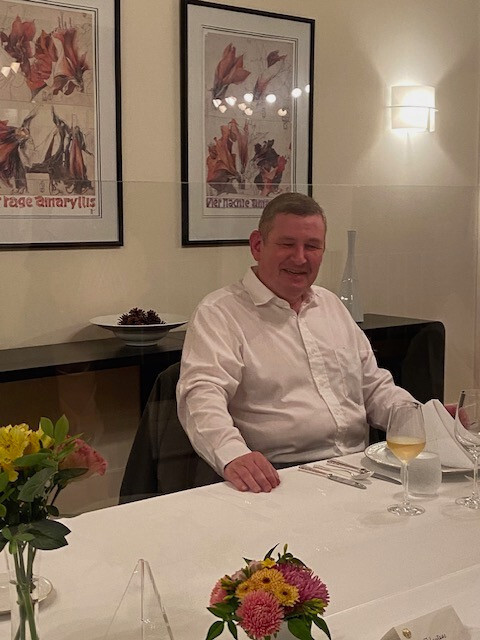

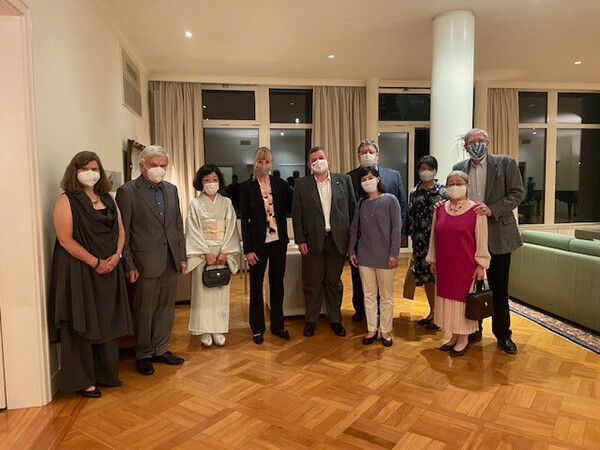




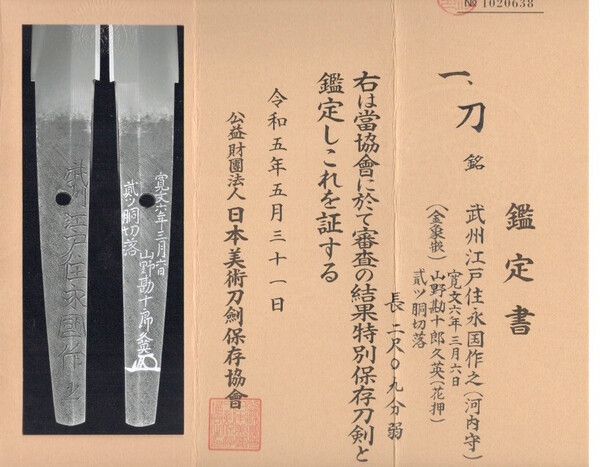
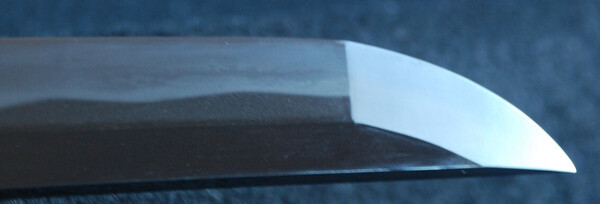
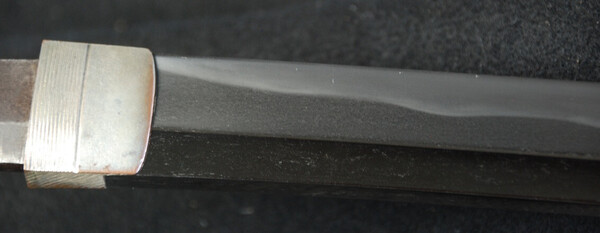


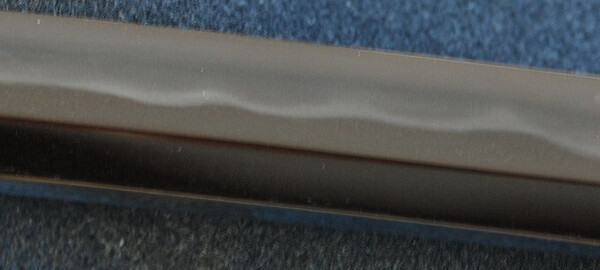


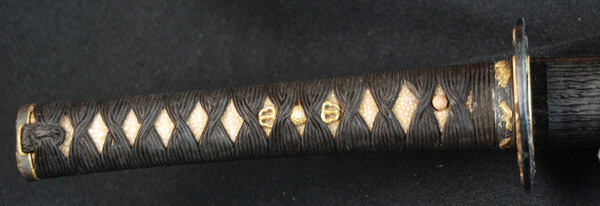



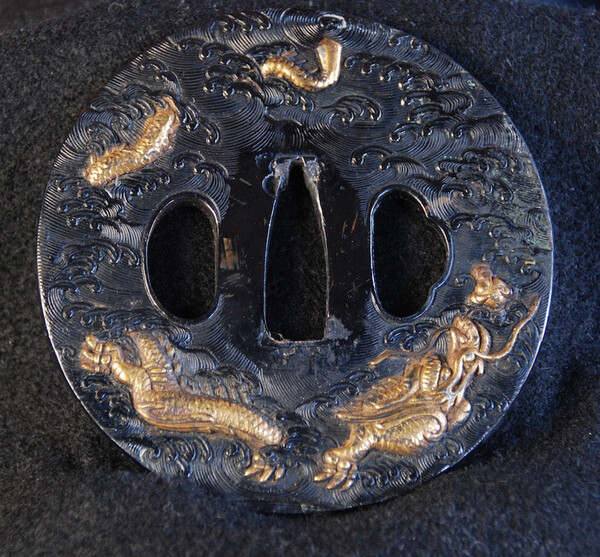
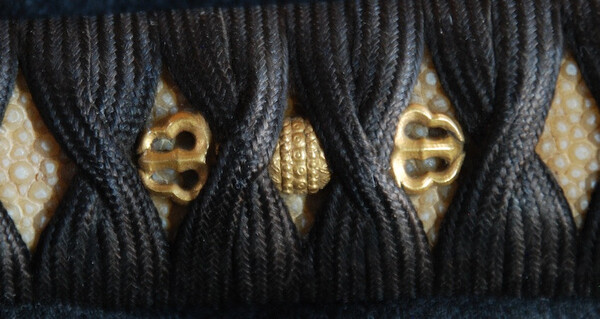
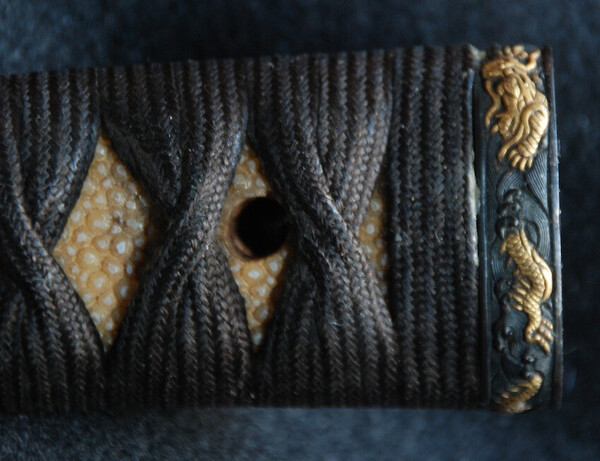
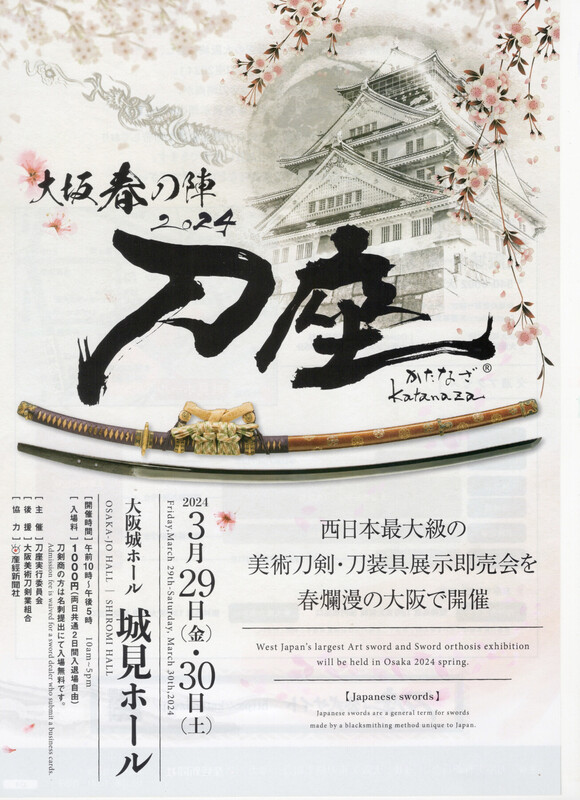
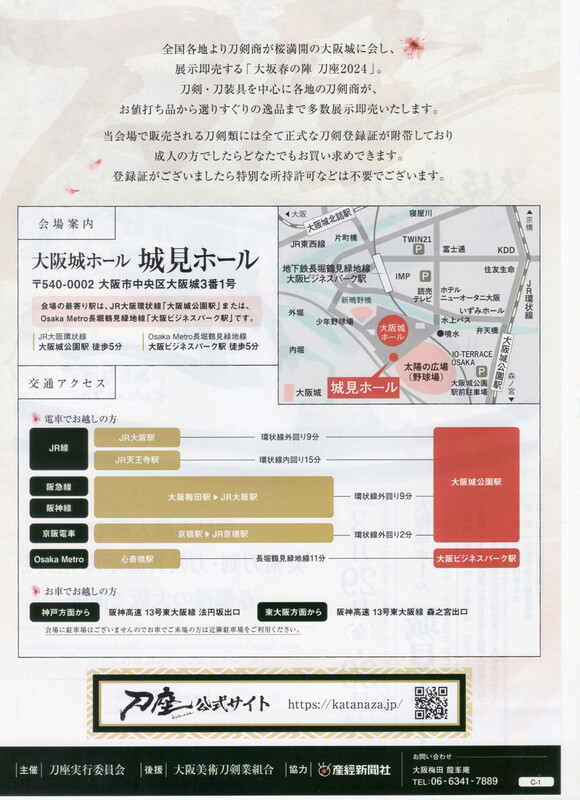
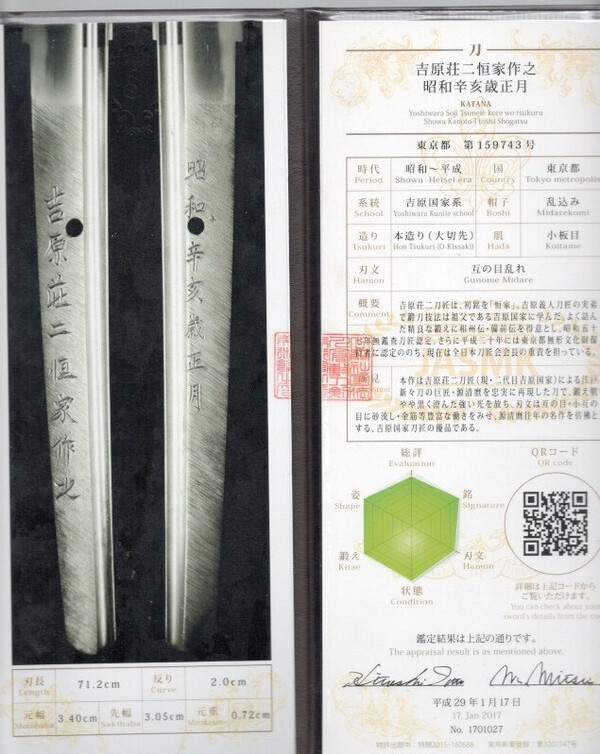
.thumb.jpg.baf041d34db1d93d2a505483fa4699bc.jpg)

